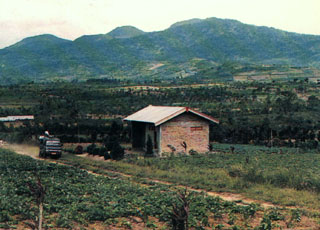Report on Kaba (Indonesia) — November 2000
Bulletin of the Global Volcanism Network, vol. 25, no. 11 (November 2000)
Managing Editor: Richard Wunderman.
Kaba (Indonesia) Explosions and light gray ash
Please cite this report as:
Global Volcanism Program, 2000. Report on Kaba (Indonesia) (Wunderman, R., ed.). Bulletin of the Global Volcanism Network, 25:11. Smithsonian Institution. https://doi.org/10.5479/si.GVP.BGVN200011-261220
Kaba
Indonesia
3.5156°S, 102.6261°E; summit elev. 1962 m
All times are local (unless otherwise noted)
This report covers activity at Kaba documented by the Volcanological Survey of Indonesia (VSI) during August 2000. Deep volcanic earthquakes dominated seismicity during the second week of August. On 17 August seismographs recorded harmonic tremor with a maximum amplitude of 14 mm. Visual observations were hindered by clouds around the summit until the third week of the month. During 22-28 August, conditions were clear and a light gray ash plume rose 200 m above the summit. Five small explosion earthquakes were registered on 26-27 August, corresponding to the same number of observed ash emissions. By the end of August, the number of deep volcanic earthquakes decreased. Kaba remained at a hazard status of 2 (on a scale of 1-4) throughout the month.
Geological Summary. The Kaba volcanic massif is ~8 km long, elongated WSW-ENE, with a summit area that includes multiple large craters. On the SW is the 1-km-diameter Hitam crater, with the Malintang cone and 400-m crater ~1 km NE, on the flank of the active 1-km-diameter Kaba crater. The smaller Mali crater is connected to Kaba, and Vogelsang cone is just beyond that to the NE. Another large forested cone is SE of the active craters. Most recorded eruptions have originated from the summit craters, and affected only the summit area. However, the upper-NE flank crater Kawah Vogelsang also produced explosions during the 19th and 20th centuries.
Information Contacts: Dali Ahmad, Volcanological Survey of Indonesia (VSI), Jalan Diponegoro No. 57, Bandung 40122, Indonesia (URL: http://www.vsi.esdm.go.id/).

